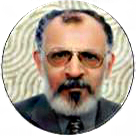





Ismail M., El Ghonamey Y. K. and Ganzour Shimaa K.( 2019). Soil mapping of west menia area, egypt using remote sensing and gis techniques.Int. J. Adv. Res. 7(10), 499-515
Abstract: The Western Menia area represents one of the highest priority areas for future development in the country. The studied area is located between 27 53 20.11 – 27 58 48.34 North and 30 06 41.53 – 30 13 6.57 East and represents an area of about 9078 Feddans. Using geological map, Digital Elevation Model (DEM) and visual interpretation of satellite data, a physiographic soil map was produced to present mapping units of the studied area. The area under investigation was classified into two landscapes, i.e. alluvial plain (4181 Feddans, 46.06 % of the total studied area) and terraces (4897 Feddans, 53.94 % of the total studied area) This study aims to assess and mapping soil properties for salinity, sodicity, lime, gypsum, depth and texture. Land capability was used to evaluate the soils of studied area. According to Sys model, the studied area was classified into four capability subclasses, i.e. S2x, S3t, S3d and S3d, t. The soils of S2x have moderate limitations for agricultural crops, whereas texture is the most limiting factor (48.55 % of the total area). The most limiting factor of soils of S3t is topography (12.89 %), while the soils of S3d (27.89 % of the total studied area) whereas the depth is the most limiting factor. On other, hand the soils of S3d, t (10.66 % of the total studied area) whereas the depth and topography are the main limiting factor for agriculture. Soil fertility maps were conducted for macronutrients and micronutrients.
Keywords: (Soil Mapping, GIS, Remote Sensing, Egypt)